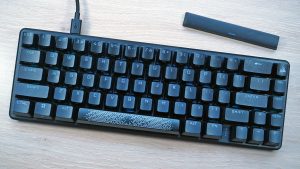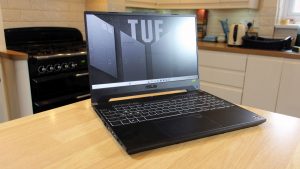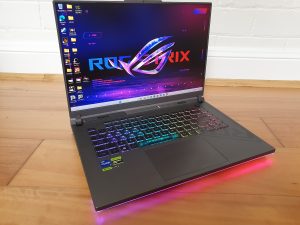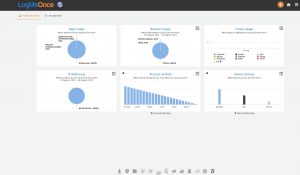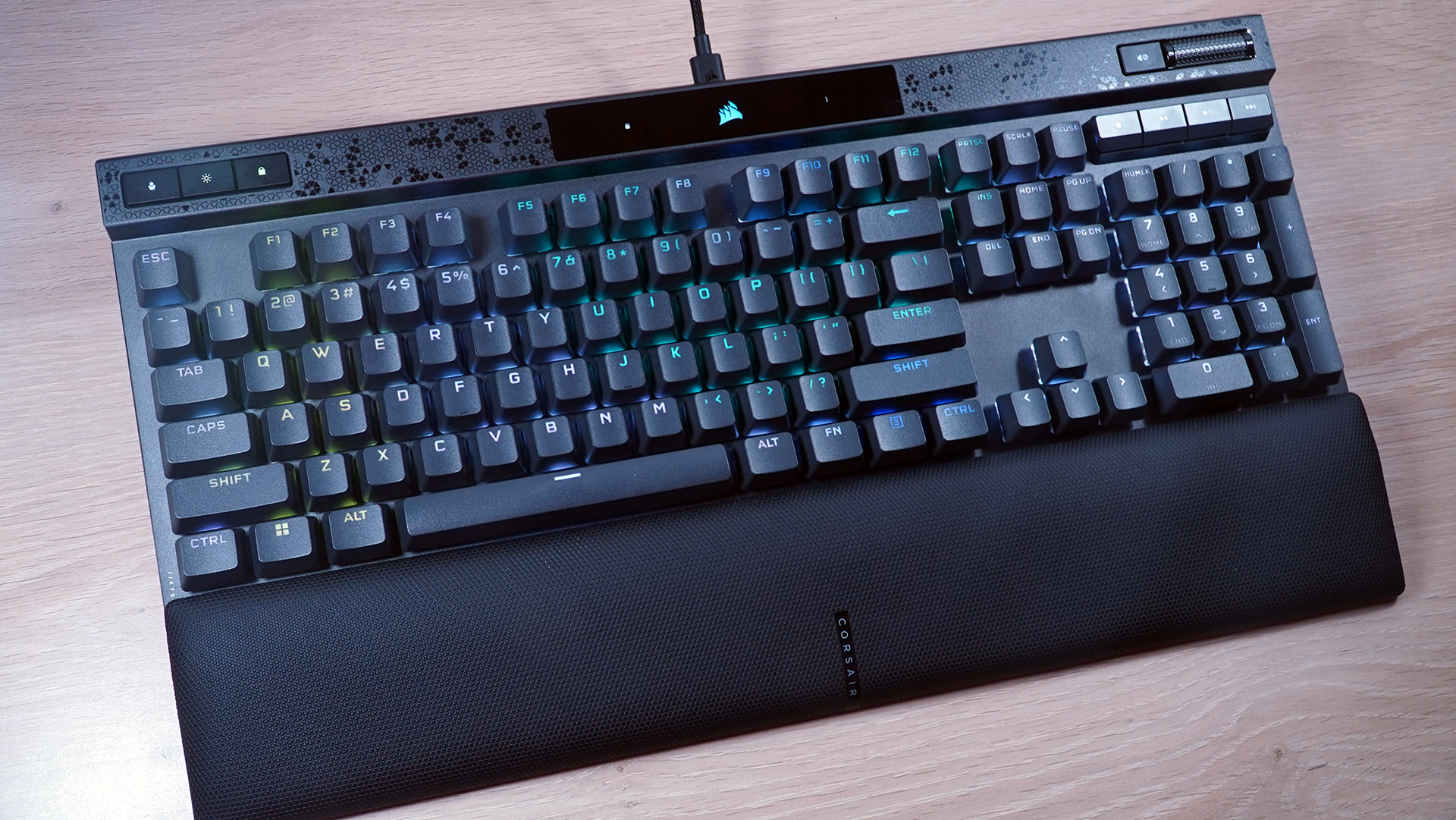

Mechanical keyboards are all over the place, specifically in video gaming circles. It’s getting hard for a company to stand out, which is probably why some have actually turned to tossing every possible function and trick at the wall to see what sticks. Corsair is taking a more concentrated technique with the K70 Max. It’s the company’s first keyboard with “magnetic MGX” switches, which allow for variable actuation points and dual appointed functions on every essential press.
That alone would deserve an appearance, if not an automated recommendation. The K70 Max likewise stacks on a bunch of gamer-friendly, high-end functions, like a full 100% design, PBT keycaps, a brand-new moistened body, a super-comfy wrist rest, and wise media controls. And it does all this without being overpriced compared to the competitors … though in this highly particular niche, there isn’t that much competitors to be had.
It’s the company’s first keyboard with “magnetic MGX” switches, which enable variable actuation points and double designated functions
All that integrated makes this keyboard a recommendation, albeit a conditional one. If you’re wowed at the idea of variable actuation for essential switches and 2 functions on the same key press (and you’re willing to spend for it), then the K70 Max is the keyboard to opt for.
Further reading: See our roundup of the very best mechanical keyboards to learn about competing items.
Corsair K70 Max RGB design
The K70 Max RGB has a timeless gamer keyboard appearance. It’s full-sized, so prepare a quite huge portion of your desktop for it, and a little more if you desire the included wrist rest too. Extra media controls are above the number pad, plus a volume wheel and profile/lighting/Win lock buttons on an even greater strip, which it shares with Corsair’s glossy strip of LED indicators for num lock, mute, et cetera. That volume wheel is metal, non-clicky, and does not have a recessed button. Also note the stylish hexagon printing on this raised metal rack, a nice touch.
The wrist rest deserves specific appreciation. I’m of the mind that any keyboard in this cost variety needs to consist of one, and Corsair didn’t cut corners here. Its somewhat rubbery triangle texture grips my palms while the cushy foam underneath is very plush, and the entire thing simply sits at the perfect area to make video gaming or typing for hours on end comfortable. It’s kept in place with magnets and a number of foam pads, indicating it’s both tight in location and easy to remove if you ought to wish to. Just aces all around, and a significant improvement over last year’s model.
The sides of the keyboard underneath the sandblasted aluminum deck are bare, while the top has a “competition mode” toggle beside the detachable USB-C cable. This switch will disable and lock any user personalizations or macros (including lighting) and fix it in place with a little plastic bracket. I have not been to any PC gaming tournaments recently, so I can’t speak to whether that’ll satisfy any sticklers for competition rules.
There’s a little bit more thoughtful design going on beneath the keyboard, too. In addition to strong dual-stage feet– a necessity for this three-pound chonker– there are angled grooves for rerouting the USB-C cable, likewise seen on the K70 Pro. Likewise, the method the switch LEDs shine through the translucent plastic on the bottom is super cool, despite the fact that you’ll never ever see it while actually utilizing this thing. It revives fond memories of an Atomic Purple Game Boy Color.
Other significant physical features include good, thick PBT keycaps (an absolute must-have at this price point), which are a little less “rough” than some comparable examples; double-layer internal foam for sound dampening; and 8,000 Hz polling for the superhuman esports types. The crucial layout and switch stems are basic, so this board needs to deal with any customized keycaps, however the elegant switches don’t permit hot-swap sockets. Mentioning which …
What about the K70 Max RGB’s magnetic switches?
Alright, it’s time to get down and filthy with this board’s specifying function: the “Magnetic MGX” switches. If you do not set up Corsair’s hefty iCue software application, then you’ll never ever understand there’s anything particularly impressive about them. They’re direct (that suggests no click or bump from top to bottom), with a typical 45g spring. They feel smooth and satisfying if a little bit more “rattley” than regular switches, due to the fact that they lack an enhanced box-style stem. Oh, and Corsair has repaired that annoying “ping ping ping” issue from the last variation of the K70.
The magic in these switches is that the actuation point can be set magnetically, anywhere between.4 mm and 3.6 mm. And this setting can be personalized for every single switch on the board. For example, if you want your WASD directional secrets to respond to a feathery tap but you choose a difficult press on “G” for grenade, that’s easy to achieve.
This might appear like a trick. And for a lot of users, it will be, especially if they’re not interested in diving deep into software application personalization. There’s a lot you can do with this if you’re the kind of player obsessed with refining every last aspect of your experience, particularly for esports. On top of customizing the force required for each private secret, you can set some (or all) keys to double actions. A soft press triggers one function, a difficult press triggers another, once again, both of which can be set to custom-made actuation points. This resembles some high-end game controllers, which can discover multiple levels of pressure on the buttons. So for example, you can push that “G” button gently to throw a flash grenade or roughly to throw a frag grenade (assuming the video game will let you bind those actions individually).
If you’re not prepared to invest actual hours trying out different setups, the multiple actuation point function most likely isn’t that beneficial for you. Quick Trigger permits for an instantaneous reset function as quickly as the keyboard identifies either down or upward movement on the switch, ideal for crazy-fast strafing.
Corsair’s iCue software
In order to set any of these functions, you’ll need to dive into the iCue software application, under the Key Actuations menu. For a basic single-key function, it’s pretty straightforward, with a helpful illustration of exactly where in the crucial press it’ll be triggering.
iCue handles an incredible amount of information and settings, so it can be forgiven for being less than user-friendly. I found that having to move in between two different menus to set several actuation points, and the real functions that they trigger, somewhat exhausting. And that’s on top of a solid 20 minutes of poking around to see how this procedure actually works. The software likewise has the usual tools for managing lighting results with plugins available for Lenovo, Asus, MSI, and Nvidia hardware (there are even 2 different zones just for the Corsair logo design on top– excellent sorrow) and numerous hardware toggles.
Once again, this most likely won’t prevent anyone who’s in fact thinking about the K70 Max for the variable actuation function. They were going to spend a considerable piece of time personalizing this board in any case. And if all you actually want to do is play with a little custom lighting and set all your keys to the very same light or hard actuation point, it’s simple enough to do. There’s space for enhancement, but those who get deep sufficient to find iCue discouraging most likely knew what they were in for.
How does the K70 Max RGB compare in worth?
Keyboards with user-selectable actuation points, sometimes going by an “analog” shorthand, are still incredibly thin on the ground. SteelSeries makes one, the Apex Pro for $200 with a trendy OLED screen, and there’s the somewhat niche Wooting Two HE at $195. Razer, to no one’s surprise, has the most expensive offering at $250 for the Huntsman V2 Analog with some extra-fancy lighting. (Technically this uses optical switches rather than magnetic, however it provides the very same custom-made actuation and dual actuation functions.).
Not having actually checked the other alternatives in this section, I’ll need to fall back on pure specs. Corsair’s $220 K70 Max has Razer beat in pure hardware capability, as its custom actuation settings start at just.4 mm, versus a much deeper 1.5 mm on those optical switches. I’m prepared to knock the Wooting Two HE out of the value argument due to its complete lack of a wrist rest or any media controls. And I’m likely to offer the K70 more props for its comfortable wrist rest than the tough plastic on the SteelSeries.
The SteelSeries also cheaps out a little by having adjustable actuation just on its primary alphanumeric key section. If you’re prepared to invest $200 on a keyboard with custom actuation keys, then I don’t think a $5 discount rate will sway you, or a $50 premium will turn you off.
Should you purchase the K70 Max RGB?
When once again I should worry: “Analog” keyboards are an incredibly niche item, and one that only the most requiring, tweak-happy players will have the ability to utilize completely. If you’re a fan of Corsair’s keyboard styles and functions (and do not mind the body ping), the regular K70 Pro will serve you just fine at a $60 discount with a range of Cherry changes to select from. The only thing you’re missing out on is that brand-new padded wrist rest.
If you understand the appeal of the magnetic switches, and you want a keyboard that’s filled to the brim with other functions, the K70 Max will do perfectly. Not only does it debut the custom-made actuation function remarkably well in Corsair’s line (complicated iCue software application regardless of), it likewise improves upon the previous K70 in small but meaningful ways, with a quieter body and a super-comfy wrist rest.
If you comprehend the appeal of the magnetic switches, and you want a keyboard that’s stuffed with other features, the K70 Max will do perfectly.
Go all out if you like the concept of customizing your switches without replacing them, or hitting 2 functions on the very same key press. If you choose a smaller TKL or 65% design, Corsair will most likely have those choices available within a few months.


